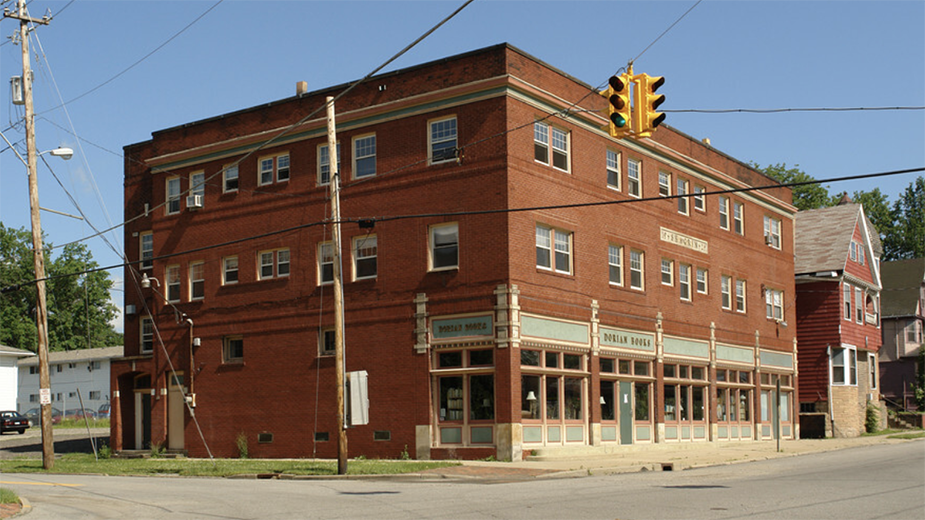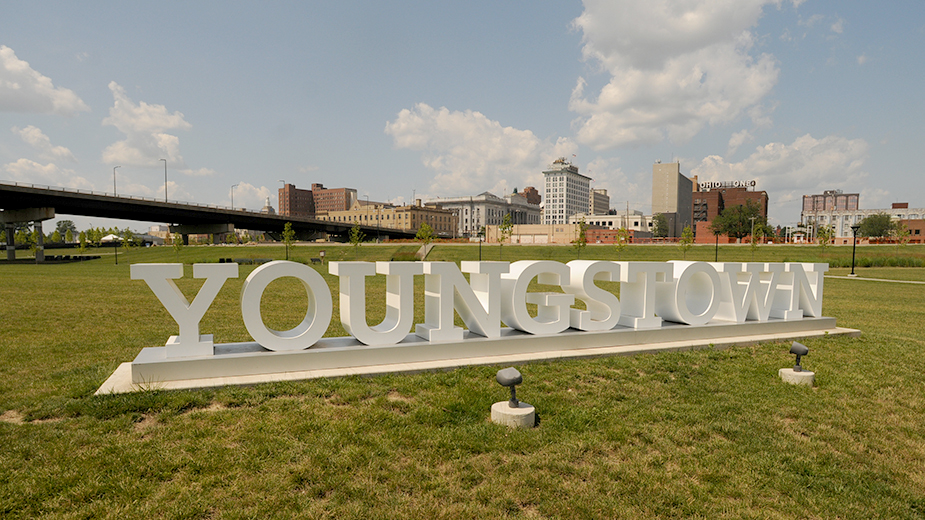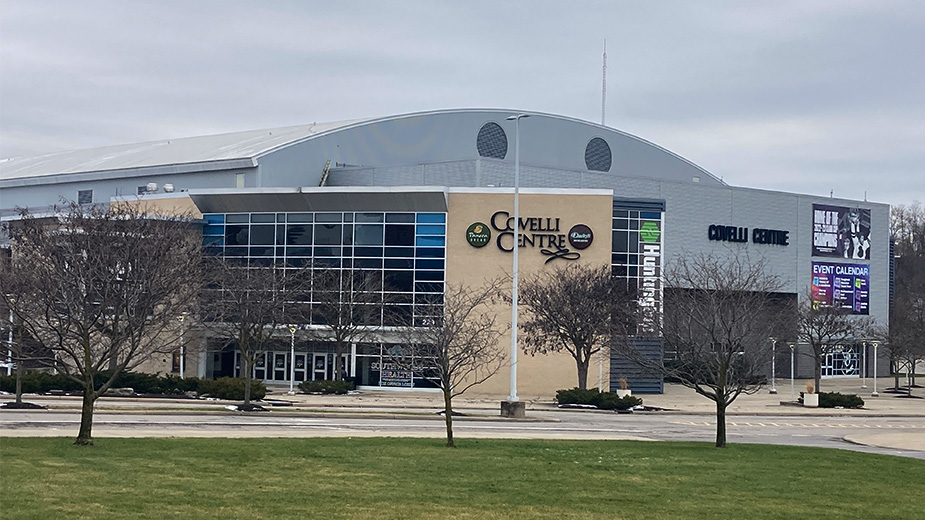Council, Economic Development Director Debate Canceled Dorian Books Project
YOUNGSTOWN, Ohio – Members of City Council and the city’s economic director verbally sparred during a meeting of Council’s finance committee over the cancellation of a proposed redevelopment of the former Dorian Books building.
Last Thursday, 802 Elm Development requested that the city rescind the request for a $2 million float loan, said T. Sharon Woodberry, the city’s economic development director.
The developer, which is majority owned by Pittsburgh-based Mazzarini Real Estate Group, was in the process of purchasing the building and planned to convert it into a deli offering fresh fruits and produce on the ground floor and apartments on the upper levels.
Council members’ decision a week earlier to table legislation authorizing the loan, moving the matter into its community planning and economic development committee “blindsided” her, Woodberry said in a statement she read toward the end of the committee meeting.
“Personally, it was both disappointing and frustrating to have put forth six months of effort working with a developer to have a quality project presented to City Council, only to have those efforts thwarted by what I can at minimum state were a lack of communication and professional courtesy extended to the economic development division,” she said.
Council members were informed of the project in July, and the pending legislation and project details were discussed at the Nov. 9 community planning and economic development meeting, as well as the Nov. 29 finance committee meeting, she added. She also said at the meeting that the developer wanted to close on acquiring the property and on financing for the project by the end of they year.
“I have no objection to City Council members wanting to perform their due diligence to gain confidence in any project presented to City Council. However, I am at a loss to understand how that can be done when I never received one phone call, email or text message asking any questions about this project,” she said.
First Ward Councilman Julius Oliver, whose ward the project was in, said he was fine with moving forward on the project, especially since the loan was guaranteed by an irrevocable letter of credit. He also was fine with his colleagues deciding to put it into another reading for further discussion, as he had received “multiple calls” from people cautioning him about the deal.
“I don’t think City Council ever said they weren’t in favor of the deal,” he said. “I think some of my colleagues just wanted more information.”
He also said he was unaware that there was a specific timeline for the project. That the developer felt the need to pull out of the project is on the developer, not Council. “The developer decided,” he said.
It’s unfortunate that the developer didn’t understand how City Council or its timelines work, Third Ward Councilwoman Samantha Turner said. “It’s our prerogative to hold it back and ask our questions, because that is a part of our job,” she said.
Sixth Ward Councilwoman Anita Davis said she also received calls and emails raising questions about the project.
“If I have a colleague who says they still have concerns and want to ask questions, I think it behooves us to go there and give pause. I’m not making a comment or an accusation or anything else, but we certainly have to be very cognizant of two words – Chill-Can,” she said.
Also discussed during the meeting were pieces of legislation council members will consider at their meeting Wednesday related to a controversial downtown street project and the removal of old gas station tanks on Wick Avenue.
Council now has in second reading legislation that would authorize the city’s board of control to enter into an agreement for a $1.3 million grant for Walnut Street and Boardman Street safety upgrades. In third reading is an agreement for another $300,000 grant.
The total project, which would include converting a now-closed portion of Walnut Street into a pedestrian staircase from Commerce Street north to Wood Street, has an estimated price tag of $2.9 million, but Charles Shasho, deputy director of public works, said he expects the project to come in below that estimate.
Shasho, Oliver, Mayor Jamael Tito Brown, planning consultant Hunter Morrison, Nick Chretien of Economic Action Group and Nikki Posterli, Brown’s chief of staff and community planning and economic development director, spoke in support of the project to council members, who previously have expressed concerns about the city’s emphasis on the downtown area at the apparent expense of the neighborhoods.
“A lot of our focus has been on what we call the core and corridor strategy, looking at the investments that have taken place in the core of the city, but how we can supplement and complement those investments by building off of it,” Morrison said.
Going back to 2014, the city has received about $22 million from the Ohio Public Works Commission’s grant program – the source of the $1.3 million grant – for roadway improvement project, only $5.5 million of which has been used for downtown, Shasho said.
He also pointed out that some city streets are restricted in the kinds of grant funds they qualify for. When it comes to scheduling improvements on streets, the city doesn’t enjoy the same flexibility on streets that are part of state and federal routes that it does for streets that are entirely under its control.
The idea is to get the downtown Youngstown “economic engine” so healthy that the city can reduce its “high blood pressure,” the city income tax, Oliver said.
“Because downtown is the heart of the corridors that are arteries and veins, if the heart is unhealthy, we are not pumping this economic development into the city,” he said. “My idea – and I hope the mayor and my colleagues can agree with me – is to get the get the heart as healthy as possible, pumping as good as possible, bring down the blood pressure or tax rate, bring businesses back into the city and continue to expand the rope into the neighborhoods at the same time we’re working on it downtown.”
Davis, who was particularly critical of the condition of portions of Market Street, rejected the notion that business left the city because of its income tax rate.
“This is because of the crime rate,” she said. “There’s still a perception that Youngstown is not a safe place to live.” The city needs to take actions so people see things are being done to make people feel safe and see the neighborhoods are improving.
“We definitely need to make sure that we put the same effort in the neighborhoods as we’ve done downtown,” Brown affirmed.
At Wednesday’s meeting, council members also will consider legislation to accept and appropriate a $212,750 Abandoned Gas Station Cleanup Grant from the Ohio Department of Development to remove and remediate underground tanks at a former gas station at 1395 Wick Ave.
The city-owned property is one of about 40 such sites in the city, Posterli said. “This gives us an opportunity to clean up this area, and redevelop that site,” she said.
In 2017, the city received a $200,000 brownfields assessment grant to prepare an inventory of petroleum brownfields, conduct environmental site assessments and prepare cleanup plans.
The city can apply for funds for one site at a time and must have the work completed before applying for a subsequent one, she said. The site is near the Wick Six area that was dominated by car dealerships years ago and which the city previously cleaned up.
“This is just an extension of what we want to do there so we can have a complete redevelopment site,” she said.
Copyright 2024 The Business Journal, Youngstown, Ohio.



